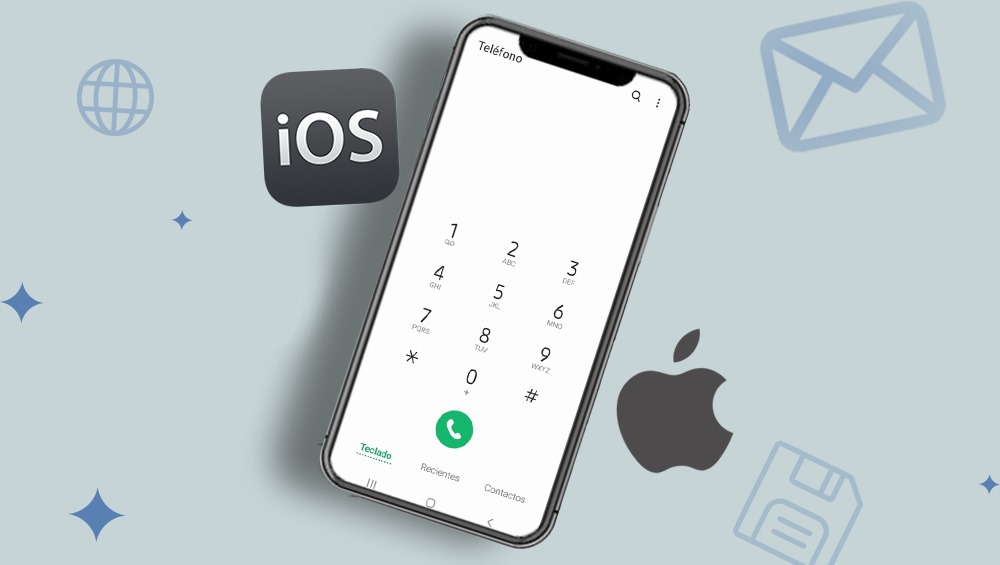The iPhone has revolutionized the way we communicate, and one of its most significant contributions to this evolution is in the realm of calling. From its inception to the present day, iOS calling has undergone a remarkable transformation, propelled by the development of innovative communication apps. This journey traces the evolution of iOS calling, highlighting the key milestones and transformative apps that have shaped the landscape of mobile communication.
The Emergence of iOS Calling
With the launch of the first iPhone in 2007, Apple introduced a new era of mobile communication. The device combined sleek design, intuitive interface, and advanced technology, setting the stage for the evolution of iOS calling. Initially, iOS calling relied on traditional cellular networks, enabling users to make voice calls using their mobile carrier’s infrastructure. While groundbreaking at the time, this method had its limitations, including call quality issues and high costs for international calls.
Evolution of iOS Calling: From 2G to 5G
As iPhone technology advanced, so did the capabilities of iOS calling. The transition from 2G to 3G networks marked a significant milestone, allowing for faster data speeds and improved call quality. This paved the way for the development of communication apps that leveraged data networks to enable voice over internet protocol (VoIP) calling. Apps like Skype and Viber emerged as pioneers in this space, offering users an alternative to traditional cellular calls by utilizing Wi-Fi or mobile data connections.
With subsequent iterations of the iPhone and the rollout of 4G LTE networks, iOS calling experienced another leap forward in terms of speed and reliability. The introduction of Voice over LTE (VoLTE) technology further enhanced the quality of cellular calls, delivering clearer audio and faster call setup times. These advancements laid the foundation for a new generation of communication apps that could seamlessly integrate with the iPhone’s native calling capabilities.
iPhone Communication App Journey: A Paradigm Shift
The proliferation of app development and the App Store ecosystem ushered in a new era of iOS calling. Developers began to explore innovative ways to enhance communication experiences beyond traditional voice calls. Messaging apps like WhatsApp and Facebook Messenger gained popularity by offering a combination of text, voice, and video communication features, all within a single platform. These apps transformed the way people interacted, enabling them to stay connected with friends and family across the globe.
Simultaneously, a wave of disruptive startups emerged, challenging the dominance of traditional telecom providers. Apps like WhatsApp, with its end-to-end encryption and free international calling, posed a threat to established players in the telecommunications industry. This shift towards app-based communication marked a turning point in the evolution of iOS calling, emphasizing convenience, affordability, and versatility.
Transformative iOS Calling Apps: Redefining Communication
In recent years, iOS calling has witnessed a proliferation of transformative apps that have redefined the communication landscape. One such app is FaceTime, Apple’s proprietary video calling service. Launched in 2010, FaceTime revolutionized video communication by offering seamless integration with iOS devices and unparalleled ease of use. With features like group calling and FaceTime Audio, it has become a staple for millions of iPhone users worldwide.
Another notable addition to the iOS calling ecosystem is Zoom, which gained prominence during the COVID-19 pandemic. Initially designed for business conferencing, Zoom quickly became a household name, enabling remote work, virtual gatherings, and online learning. Its intuitive interface, high-quality video, and cross-platform compatibility made it a preferred choice for individuals and organizations alike.
Furthermore, the rise of social audio platforms like Clubhouse has introduced a new dimension to iOS calling. By combining live audio chat rooms with networking opportunities, Clubhouse has created a unique social experience that fosters meaningful conversations and connections. Its exclusive invite-only model and celebrity endorsements have contributed to its rapid growth and cultural impact.
The Future of iOS Calling: Innovations on the Horizon
Looking ahead, the future of iOS calling promises continued innovation and evolution. Emerging technologies such as 5G, augmented reality (AR), and artificial intelligence (AI) are poised to shape the next generation of communication apps. From immersive AR-enhanced video calls to AI-powered voice assistants, the possibilities are endless.
Moreover, the ongoing convergence of communication and digital services is likely to drive further integration and synergy among iOS calling apps. We can expect to see seamless interoperability between messaging, voice, and video platforms, enabling users to communicate effortlessly across different channels and devices.
In conclusion, the journey of iOS calling has been marked by continuous evolution and innovation. From its humble beginnings as a basic voice calling feature to a diverse ecosystem of communication apps, the iPhone has transformed the way we connect with others. As technology advances and user preferences evolve, the future of iOS calling holds exciting possibilities for redefining the way we communicate in the digital age.
Evolution of iOS Calling: Shaping the Future of Communication
The evolution of iOS calling has been a testament to the transformative power of technology. What started as a simple voice calling feature on the iPhone has evolved into a multifaceted communication ecosystem, driven by innovation and user demand. As we reflect on the journey of iPhone communication apps, it becomes evident that the future holds immense potential for redefining the way we connect and communicate in an increasingly interconnected world.
